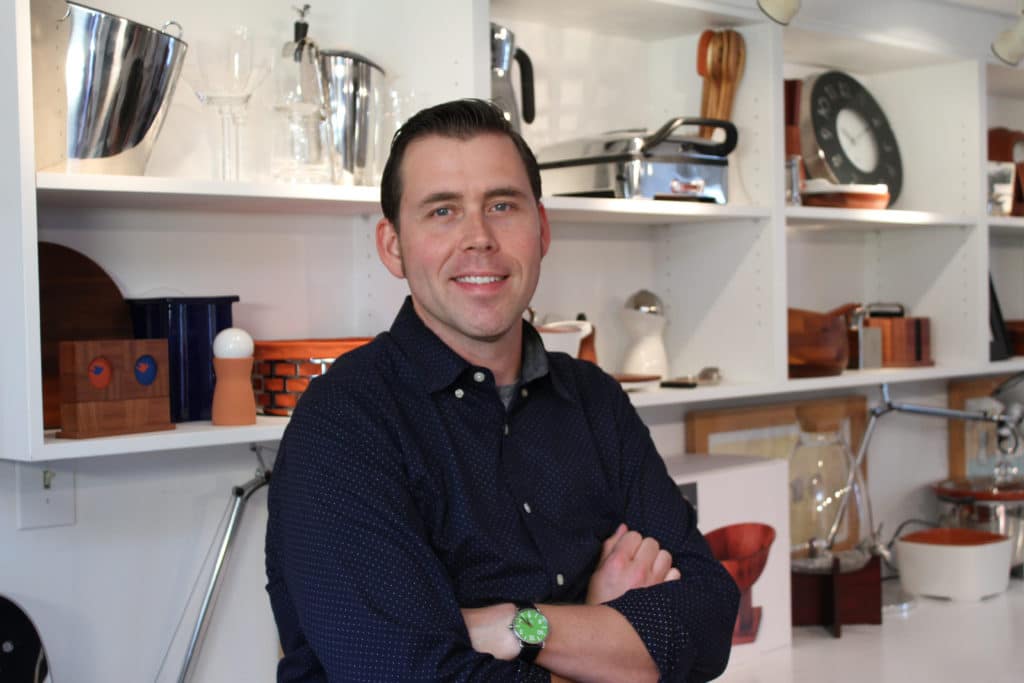By Katalin Gyurián Toth
What comes to mind when you think of a wheelchair? Limitation? Disability? Aging? Lack of independence?
Yet the wheelchair is accepted as an as-is solution-no one questions its design nor the universal symbol that it’s become.
As a partner at Michael Graves Architecture and Design, Rob Van Varick believes that design plays a key role in our identity. “Every single choice we make redefines who we are,” he says. With that in mind, the aging or disabled population has “their choices limited or cut off entirely.”
Rob will be a speaker at TEDxNavesink IDENTITY on May 20 at the Paramount Theatre in Asbury Park. In his talk, A Declaration of Independence: How Design Can Change the Aging Experience, Rob will convey the importance of design in our everyday lives.
“We see design as having the ability, the necessity even, to play a role in designing towards [accessibility for all], but doing it in a way that’s still creating choices that are aspirational to people,” he said.
INSPIRED TO DESIGN
Rob has a bachelor’s degree in Fine Arts from the Rhode Island School of Design, where he studied industrial design.
He was inspired by his former boss of 12 years, Michael Graves, who revolutionized the field of architecture and design. Graves took design to a different level by looking at healthcare from a holistic perspective and the implications that design had not only on the aging or disabled patient but also on the families and clinicians. In fact, Graves gave a TEDMed talk on this topic a few years ago.
Rob says that a person doesn’t want to age and lose himself simply because of his limited choices. The products that are meant to help patients with accessibility, such as canes or transport chairs, tend to suffocate and demean them. But proper holistic design can protect people and allow them to be themselves and pursue their own happiness.
Think of how a simple curb cut in sidewalks has changed accessibility for so many people. Not only does the simple redesign of a curb help people with disabilities, but it also helps moms with strollers or mail carriers with trolleys. That was a result of smart, intuitive design.
REDESIGNING THE WHEELCHAIR
Rob is particularly proud of the modified wheelchair which he helped in design with Stryker Medical. It is a transport chair called the Prime T.C., which is already used throughout hospitals in the U.S. and Europe.
“We don’t often get an opportunity to take a look at an object that is so engrained in the public psyche like a wheelchair is, where you don’t even question it anymore; it just is the solution… and to get an opportunity to rethink it from the ground up.”
Instead of having harsh edges, rusting parts, and being a nuisance for clinicians to maneuver, the Prime T.C. is designed from a human perspective. Not only is it functional, sleeker and more hygienic, but the feeling that it elicits is neither demeaning nor limiting.
Rob says that as soon as a patient sees it, his perception of the care he will receive is immediately more positive.
So what does Rob want the TEDxNavesink audience to take away from his talk? We can all start to look at the world differently and not be limited by outdated designs.
“Whether you are in retail or whether you are in business, everyone has an opportunity to make the experience better by making it more accessible to everyone,” he said.
Come hear Rob and other speakers share ideas worth spreading on the theme of Identity at the Paramount Theatre on May 20. Get your tickets today.


